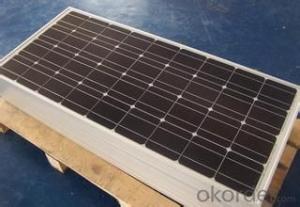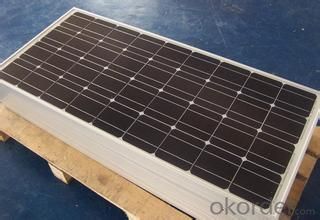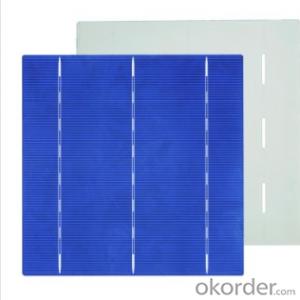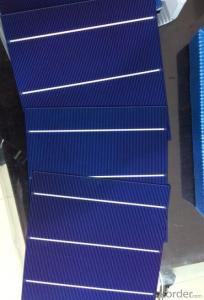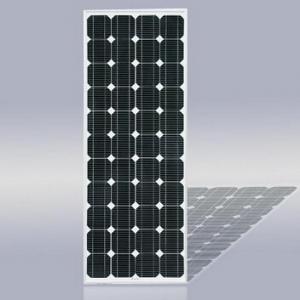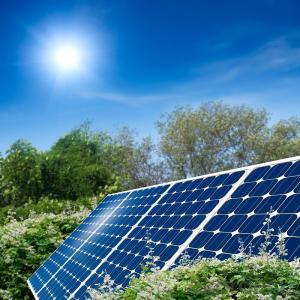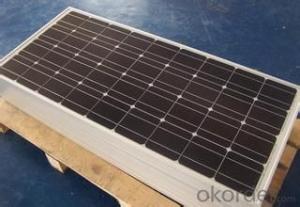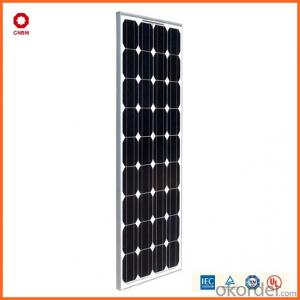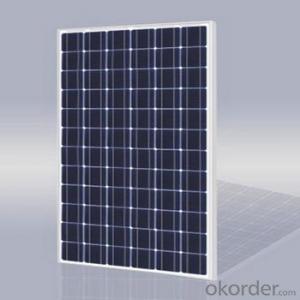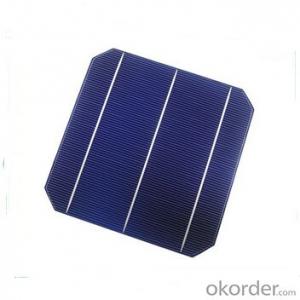Manufactured 120w Single Monocrystalline solar cells
- Loading Port:
- China Main Port
- Payment Terms:
- TT OR LC
- Min Order Qty:
- -
- Supply Capability:
- -
OKorder Service Pledge
OKorder Financial Service
You Might Also Like
Quick Details
| Model Number: | |||||
| Material: | Size: | Number of Cells: | |||
| Max. Power: | warranty: | Pmax: | |||
| Vmp: | Imp: | Voc: | |||
| Isc: | package: | customized: |
Packaging & Delivery
| Packaging Detail: | 1. packed by carton inside, and wooden case outside 2. 2 pieces into a carton |
| Delivery Detail: | 10 to 30 days according to the quantity |
Specifications
1.manufactured 120w single monocrystalline solar cells
2.CE passed
3.Size:1361*670*35mm
4.Number of Cells:36 (4*9)
manufactured 120w single monocrystalline solar cells
Reference Picture | Item : | Specification |
| Maximum power at STC(Pmax) | 120W |
| Optimum operating voltage(Vmp) | 17.2V |
| Optimum operating current(Imp) | 6.98A |
| Open-circuit voltage(Voc) | 21.6V |
| Short-circuit current(Isc) | 7.72A |
| Short-circuit current temperature coefficient | (0.065±0.015)%/°C |
| Open-circuit voltage temperature coefficient | -(80±10)mV/°C |
| Peak power temperature coefficient | -(0.5±0.05)%/°C |
| NOCT (Air 20°C; Sun 0.8kW/m wind 1m/s) | 47±2°C |
| Operating temperature | -40°C to 85°C |
| Maximum system voltage | 600V DC |
Cell | Power tolerance | No. of cell and connection |
mono-crystalline silicon solar cells | ±3% | 36(4×9) |
Dimension of module | Weight | Electrical Characteristics |
1161mm×670mm×35mm | 10.5kg | YHSP120-12 |
Characteristics | Dimension | |
- Q: What is the impact of solar cells on reducing energy waste?
- Solar cells have a significant impact on reducing energy waste as they harness the sun's energy to generate electricity without emitting greenhouse gases or consuming any fossil fuels. By converting sunlight into usable electricity, solar cells enable a greener and more sustainable energy source, ultimately minimizing the need for traditional, non-renewable energy sources and reducing overall energy waste.
- Q: What are the tin bands, sinks and interconnections used on solar modules, and what are the solar cells used in the solar cells?
- and play the battery chip in series for the purpose of the bus bar is the current of each string The busbars and interconnections are all tinned copper strips.
- Q: Can solar cells be used for powering electric vehicles charging stations?
- Yes, solar cells can be used to power electric vehicle charging stations. Solar panels can convert sunlight into electricity, which can then be used to charge electric vehicles. This helps to utilize renewable energy sources and reduce the carbon footprint associated with charging electric vehicles.
- Q: Where can I get a competitive price for this solar cell? The 2bb/3bb polycrystalline solar cell panel?
- We are a solar cell company based in Shandong, and we sell 2BB/3BB Polycrystalline solar cells/multi-solar cells.
- Q: Can solar cells be used for outdoor signage?
- Yes, solar cells can be used for outdoor signage. Solar cells are capable of converting sunlight into electricity, which can power the lighting or display systems used in outdoor signage. This allows for an environmentally-friendly and cost-effective solution for outdoor signage, as it eliminates the need for traditional power sources and reduces energy consumption.
- Q: Can solar cells be used in countries with limited sunlight?
- Yes, solar cells can still be used in countries with limited sunlight. While it is true that solar cells generate more electricity in areas with abundant sunlight, they can still function and produce energy in regions with less sunlight. Advances in solar panel technology, such as the use of more efficient materials and improved designs, have made it possible to harness solar power even in countries with limited sunlight. Additionally, the use of energy storage systems, like batteries, can help store excess energy generated during peak sunlight hours for use during low-light periods. Therefore, solar cells can still be a viable and sustainable energy solution in countries with limited sunlight.
- Q: How do solar cells perform in areas with frequent power outages?
- Solar cells can provide a reliable source of electricity in areas with frequent power outages. As long as the solar panels are exposed to sunlight, they can generate electricity and charge batteries, allowing for uninterrupted power supply even during blackouts. Additionally, solar power systems can be equipped with backup batteries, ensuring a continuous and reliable energy source even after sunset or during cloudy days. Overall, solar cells are a viable solution for areas prone to power outages, providing sustainable and independent electricity generation.
- Q: How are solar cells manufactured?
- Solar cells are manufactured through a multi-step process that involves the production of silicon wafers, the creation of a p-n junction, and the assembly of various layers to form the final solar cell. This involves slicing the silicon into thin wafers, doping them to create the desired electrical properties, applying metal contacts, and then encapsulating them to protect against environmental factors.
- Q: How do solar cells perform in desert environments?
- Solar cells perform exceptionally well in desert environments due to the high levels of sunlight and low humidity. The arid conditions and lack of cloud cover ensure that solar panels receive maximum exposure to sunlight, resulting in increased energy production. Additionally, the dry climate helps prevent dust and debris from accumulating on the panels, minimizing any potential efficiency losses.
- Q: Can solar cells be used in concert venues?
- Yes, solar cells can be used in concert venues. They can be installed on the rooftops, facades, or parking areas of concert venues to generate clean and renewable electricity. Solar energy can power various aspects of the venue, such as lighting, sound systems, and other electrical equipment, reducing the reliance on traditional energy sources and lowering carbon emissions. Additionally, solar panels can be integrated into portable structures to provide power for outdoor concerts and festivals.
Send your message to us
Manufactured 120w Single Monocrystalline solar cells
- Loading Port:
- China Main Port
- Payment Terms:
- TT OR LC
- Min Order Qty:
- -
- Supply Capability:
- -
OKorder Service Pledge
OKorder Financial Service
Similar products
Hot products
Hot Searches
Related keywords
